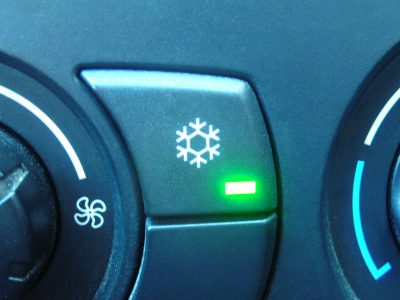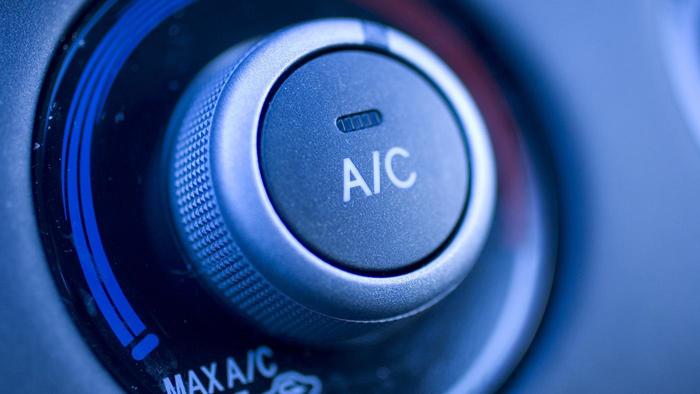 This time of year, your air conditioning becomes more and more important every day. As the temperatures rise, the days get longer, and the sun gets hotter, it is more and more important to have a properly functioning air condition system to keep your ride comfortable and convenient. Just about every car today comes standard with air conditioning to the point where it has become more of a necessity than a luxury. Even so, air conditioning systems in production vehicles today have remained largely unchanged since they started being installed in the 1940’s 50’s.
This time of year, your air conditioning becomes more and more important every day. As the temperatures rise, the days get longer, and the sun gets hotter, it is more and more important to have a properly functioning air condition system to keep your ride comfortable and convenient. Just about every car today comes standard with air conditioning to the point where it has become more of a necessity than a luxury. Even so, air conditioning systems in production vehicles today have remained largely unchanged since they started being installed in the 1940’s 50’s.
All air conditioning systems use a compressor as the motive force behind the system, a condenser to cool the compressed refrigerant, an expansion valve or orifice tube to create the cooling effect and an evaporator to transfer the chill from the refrigerant into the air in your vehicle. The biggest difference in air conditioning systems from the 50s and of today is the actual refrigerant. Many different refrigerants have been used, some early Cadillac systems even used ammonia as the refrigerant. Today’s refrigerants are synthesized compounds specials formulated to work at the temperatures and pressures used in vehicles and make for a very efficient air conditioning system. R-12 was popular until the 90s when the Clean Air Act made it illegal to produce R-12 as it is a hazard to the environment, so now R-134a is standard.
If you’ve found your air conditioning not working this summer then it is likely due to one of a few simple problems.
- Your compressor isn’t raising the pressure enough
- Your expansion valve isn’t reducing the pressure enough
- There is no air flow over your condenser
- There is no air flow over the evaporator
- There is a clog in the system
- You don’t have enough refrigerant for the system to operate properly.
Your air conditioning system has a high pressure and a low pressure side. The high pressure side starts after the compressor and includes the condenser and the connecting hoses. The low pressure side starts at the expansion valve and includes the evaporator, dryer and those connecting hoses. If the pressure is too high or too low on either side it can cause your system to malfunction or at least not function at its highest capacity. You can check the pressures in your AC system using a set of mechanic’s AC gauges available at most auto parts stores. Each vehicle is a little bit different, so you will have to check your maintenance manual for the correct operating pressures for your particular system.
The condenser and evaporator are like radiators in that their job is to transfer heat between the air flowing over them and the fluid running inside of them. The condenser on the front of your car transfers heat out of the refrigerant and into the air blowing over it. The evaporator inside your car transfers heat out of the air and into the refrigerant running through it effectively cooling the air and making you comfortable. If either of these components have blocked air flow it could causing your air conditioning to not be working. Your condenser is at the very front of your car so check around it for leaves, dirt or anything else can be blocking air flow. Also, check to make sure cooling fans turn on when you turn on your AC button. If these fans don’t come on, you may not have enough air flow over your condenser to make the system work properly. For the evaporator, check your cabin air filter for debris and dirt to make sure it is getting the proper flow. Also, check to make sure your ventilation fan is operating properly.
If you have an air conditioner not working because of a clog, you will discover that with your AC gauges. A clog will result in an abnormally high pressure on the high pressure side of your system. Clogs usually occur in the condenser due to the small tubes, the orifice tube, or the dryer. Air Conditioning systems cannot easily be flushed so replacing the clogged component is the best way to solve the problem.
The most common cause of air conditioning failures is due to a lack of refrigerant. Due to the high operating pressures of the system and the characteristics of R-134a, it is not difficult for it to escape even through small leaks. If you simply add more refrigerant it will again leak out of the system soon causing a failure. Before you recharge your air conditioning system, add BlueDevil Red Angel AC Stop Leak to seal any leaks. BlueDevil Red Angel AC Stop leak is a leak stop that contains no particulates or anything else that could clog your system. At the leak point, the temperature differential will cause BlueDevil Red Angel AC Stop Leak to form a chemical weld sealing your leak and keeping your air condition working properly and you comfortable.
For more information about BlueDevil Red Angel AC Stop Leak, check out our product information page here: AC Stop Leak Aerosol
You can also purchase BlueDevil Red Angel AC Stop Leak at any of our partnering local auto parts stores like:
- AutoZone
- Advance Auto Parts
- Bennett Auto Supply
- CarQuest Auto parts
- NAPA Auto Parts
- O’Reilly Auto Parts
- Pep Boys
- Fast Track
- Bumper to Bumper Auto Parts Specialists
- S&E Quick Lube Distributer
- DYK Automotive
Pictures provided by:
air_conditioning.jpg – By Mattes – Licensed By Creative Commons Via Wikimedia – Original Link
BlueDevil Products can be found on Amazon.com or at AutoZone, Advance Auto Parts, O’Reilly Auto Parts, NAPA, and other major auto parts retailers.
12 responses to "Why is My Air Conditioning Not Working?"
12 Comments
Leave a Reply
Related Articles
Search Blog
Subscribe
Blog Categories





I recently purchased red angel from a seller on ebay. I have a 1998 Toyota Camry. After injecting the product into the system and adding a 12 oz can of 134a, the ac started working again. The pressures were well within operating range. The cool air only lasted one day. Do I need to add another can of red angel or is one suppose to do the trick? Your help is appreciated because I have 3 vehicles with this issue and I want to believe in a product that works.
Larry-
You should only have to apply Red Angel one time per vehicle. IF the Freon continues to leak down over the next few days please contact us at 888-863-0426. If not, then you should be good to go with that one.
Thank You!
-BDP
I have a 2000 mitsubishi mirage and everything works on my ac, but it only blows cold air on defrost. How can I fix this?
Christina,
Thanks for your question about your Mirage. It sounds like you have an electrical problem with the actual button that turns on your air conditioning. When you put the defrost on your car automatically turns the air conditioner on so we know everything is working properly there. Try removing the AC button from the dashboard and checking it for proper operation and make sure the wires are properly attached.
Larry, it sounds like you may have a pretty good leak some where within your system. Most a/c systems are charged with a dye that you can use a special light to check to find the leak or there is also sniffers that can be used to find leaks. But, another alternative that I have used myself is this and it very well may help you find your leak and solve your problem. Try this, with your system fully charged. Get a spray bottle from your dollar store, (or you can use most any bottle for that matter), add some dish liquid soap (just a squirt), to the bottle and fill the rest of way with water. Make sure it’s mixed well, then slowly spray or pour soapy water mixture over & around any & all connection points, service ports, rubber hoses, any where that you could be loosing refrigerant or have a leak. Once you find a leak you will see this mixture start to bubble. Look closely at all points/areas you check for bubbles! If you see any bubbles forming, that is where your leak will be and that is what will need to be repaired. This stop leak additive will stop most smaller leaks but I’m sure it will not stop ALL leaks! Some will require repair and it sounds to me like you may have a pretty good leak in your system. Hope this helps. 🙂
Does the compressor have to be running in order to apply Red Angel aerosol? My compressor doesn’t cycle due to lack of refrigerant. Also, if there is no refrigerant left, does the system need to be evacuated to remove moisture before applying Red Angel and then additional R134? Thanks!
Don-
The system does not have to be evacuated to add Red Angel. The Red Angel Aerosol Can has a partial charge of Freon within it. You should inject the Red Angel and then follow it up be recharging the A/C system to the proper level.
Thank You!
-BDP
Thanks for the reply. Will the system take the Red Angel aerosol if the compressor isn’t cycling due to low refrigerant? Sorry for my ignorance! – Don
Don-
Yes, you will still be able to inject the Red Angel Aerosol through the low side service port.
Thank You!
-BDP
This advise is for all that may could benefit from it, I read above where Don asked if his system would need to be evacuated before adding anything to it and just to let everyone know as long as your system has not be opened or as long as it has some pressure still left in it….which would require checking the system with a set of a/c gauges then you would NOT have to evacuate the system. But, if you open your system to do any type of repairs or if your system has a leak and has not worked in a while and there is no pressure indicated on gauges hooked up to the service ports/schrader valves then I would HIGHLY recommend evacuating the system BEFORE using this product or trying to add more refrigerant. JMHO, I’ve got over 25 years experience working within the automotive world. Hope this helps whomever may read this. 😉
Hi my ac system has freon but when I start the car it blows cool air with in 5 – 10 mins it start to blow warm air and I don’t know why
Alex-
Is the refrigerant topped off to the proper level? Does it consistently blow warm air after it 5-10 minutes or is it intermittent? Please contact our technical support line at 888-8663-0426 so that we can get a better understanding of the vehicle’s condition and be able to make any appropriate recommendations.
Thank you!
-BDP